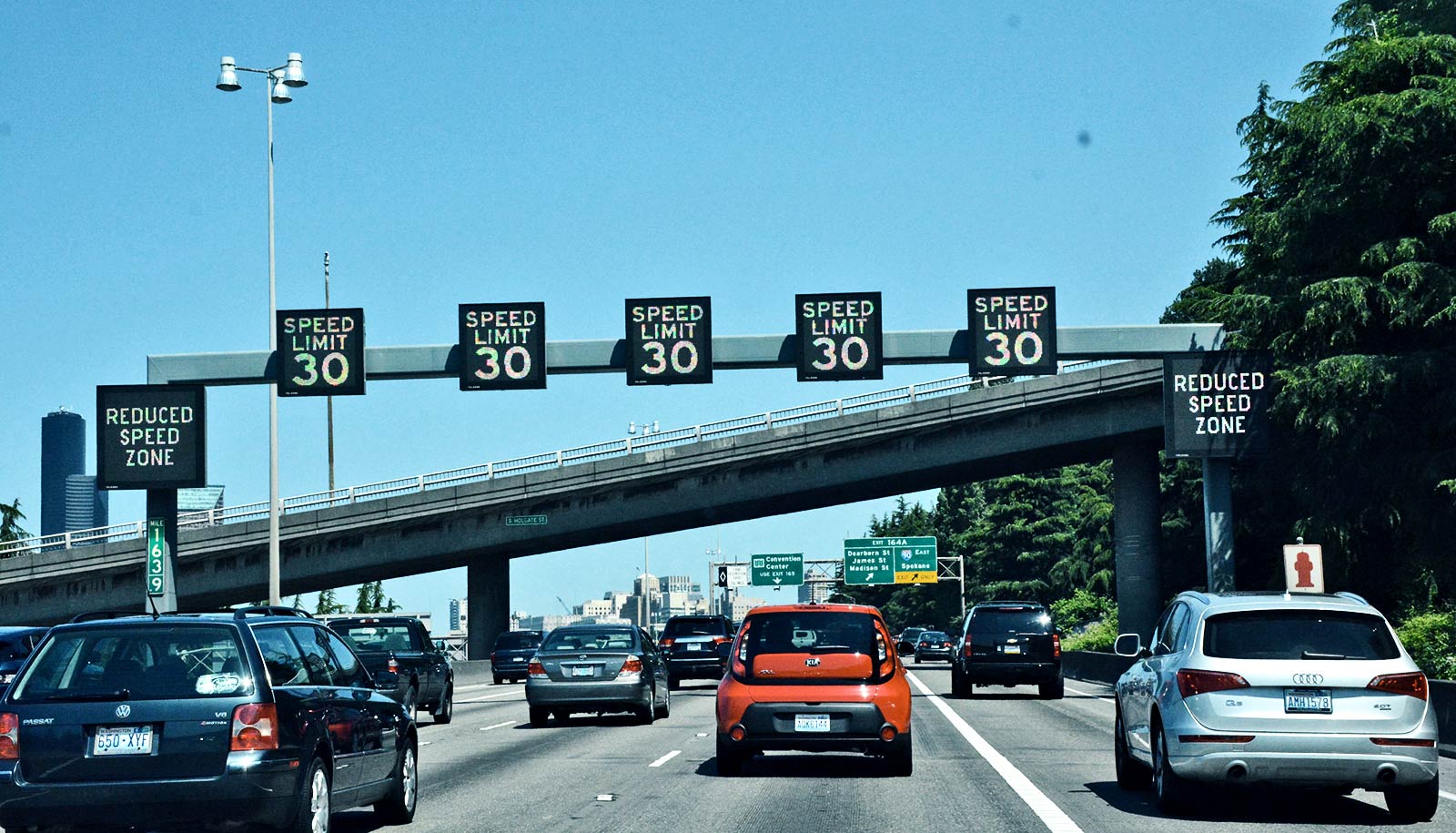Using variable speed limits in construction zones may reduce the number of crashes, decrease traffic congestion, and make work zones safer for travelers and workers alike, new research suggests.
With assistance from the Missouri Department of Transportation, researchers tested the use of variable advisory speed limit (VASL) systems and the effect they may have on lessening congestion and reducing rear-end and lane-changing accidents on a fairly dangerous stretch of I-270, a major four-lane highway in St. Louis.
“You can get both safety benefits and mobility benefits…”
“The idea was to see if warning drivers of slower speeds ahead helped reduce crashes,” says Praveen Edara, associate professor of civil and environmental engineering in the University of Missouri College of Engineering.
“Where there is queueing, if drivers are not aware of the queue downstream, they don’t have enough time to hit the brakes to slow down or stop, thus, increasing the likelihood of a crash,” Edara says. “Instead of posting a message asking them to slow down, the VASL system posts an advisory speed limit based on the actual downstream traffic speed, so drivers would know that if they’re driving 50 mph, they should slow to 30 mph downstream.”
Edara’s data collection and simulation analysis uncovered a few key pieces of data. First, the use of VASL systems is effective in gradually slowing drivers as they enter work zones. VASL use resulted in a 39 to 53 percent decrease in average queue length, and just a 4 to 8 percent increase in travel time.
More people die in states with fewer traffic laws
Additionally, using VASL meant that maximum speed differences also decreased by as much as 10 mph, and the chance of rear-end collisions dropped by 30 percent. Researchers also noted a 20 percent decrease in lane changing conflicts. Essentially, travel time was slightly longer, but lines were shorter and collisions were less frequent.
“You can get both safety benefits and mobility benefits by deploying variable advisory speed limit systems in work zones,” Edara says.
The study appears in the Journal of Transportation Safety and Security.
Source: University of Missouri



